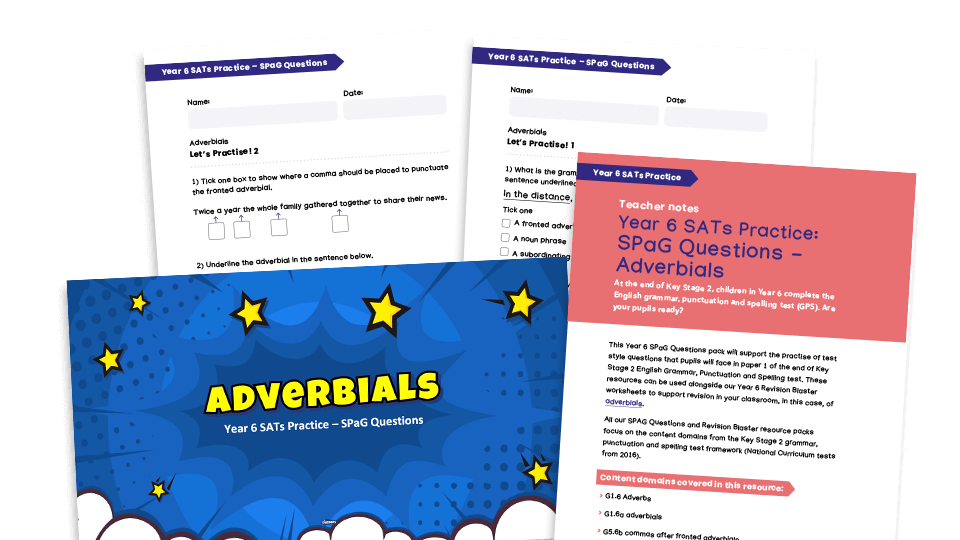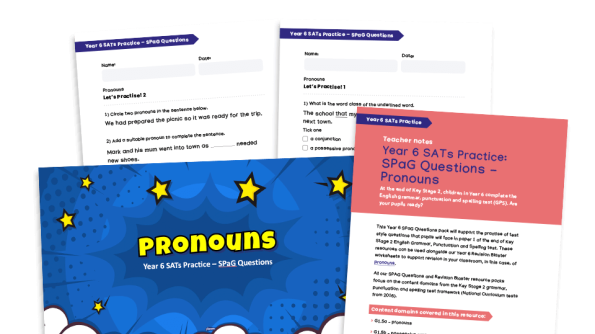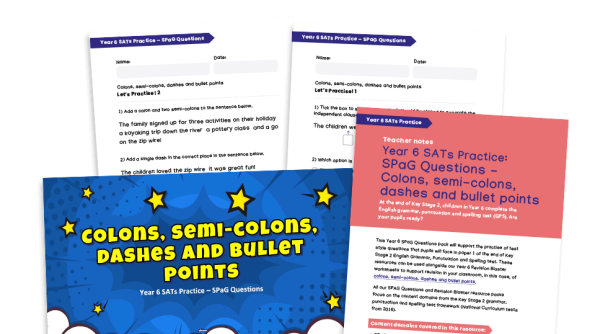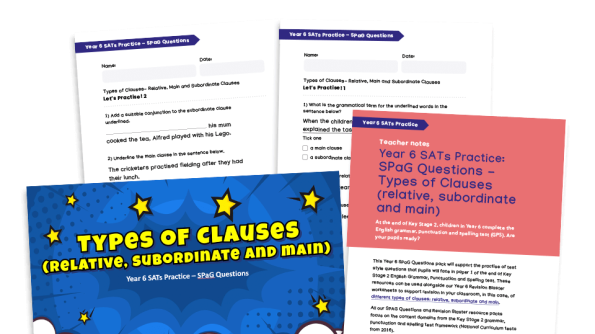Year 6 SATs Practice - SPaG questions - Adverbials

Resource Collection
KS2 SATs Support

This is a free resource
Download nowOr subscribe today and you'll also get access to...
- Unlimited access to 1,500+ resources
- Over 80 expert CPD guides
- Free subscription to Teach Reading & Writing magazine, and digital access to all back issues
- New resources every week
- Exclusive, member-only resource collections
- Plus lots more...
At the end of Key Stage 2, children in Year 6 complete the English grammar, punctuation and spelling test (GPS). Are your pupils ready?
This Year 6 SPaG Questions pack will support the practise of test style questions that pupils will face in paper 1 of the end of Key Stage 2 English Grammar, Punctuation and Spelling test.
These resources can be used alongside our Year 6 Revision Blaster worksheets to support revision in your classroom, in this case, of adverbials.
All our SPAG Questions and Revision Blaster resource packs focus on the content domains from the Key Stage 2 grammar, punctuation and spelling test framework (National Curriculum tests from 2016).
Content domains covered in this resource:
- G1.6 Adverbs
- G1.6a adverbials
- G5.6b commas after fronted adverbials
This pack includes:
- SPaG Questions PPT slides: Adverbials
- Let’s Practise! 1 and 2 PDF worksheets, (also shown on PPT slides 5 and 6)
What are adverbials?
An adverbial is an adverb, phrase or clause that is used to modify a verb or clause. Prepositional phrases and subordinate clauses are also types of adverbials. They show when, how, how often or how long, to what extent, where or why an action is occurring.
- The bus will arrive in ten minutes.
The prepositional phrase is used as an adverbial (or adverbial phrase), as it modifies the verb arrive.
- He walked until he reached the bridge.
The subordinating clause is used as an adverbial as it modifies the verb walked.
- Fortunately, he had remembered his homework.
The adverb is used as an adverbial as it modifies the whole clause by commenting. This is an example of a fronted adverbial, as it comes at the beginning of the sentence. A comma must be used after the fronted adverbial.

This resource is part of the KS2 SATs Support collection.
View more from this collection
- SPaG Questions PPT slides: Adverbials
- Let’s Practise! 1 and 2 PDF worksheets, (also shown on PPT slides 5 and 6)
- Teacher notes
Look inside!
Click through to see what this resource has to offer
More from this collection
Browse by Year Group
Year
1
Year
2
Year
3
Year
4
Year
5
Year
6
Upgrade now
Click 'Upgrade now' to activate your subscription. An invoice will appear on your accounts page and be sent by email. Once paid, the benefits of your full account will be unlocked within five days.











